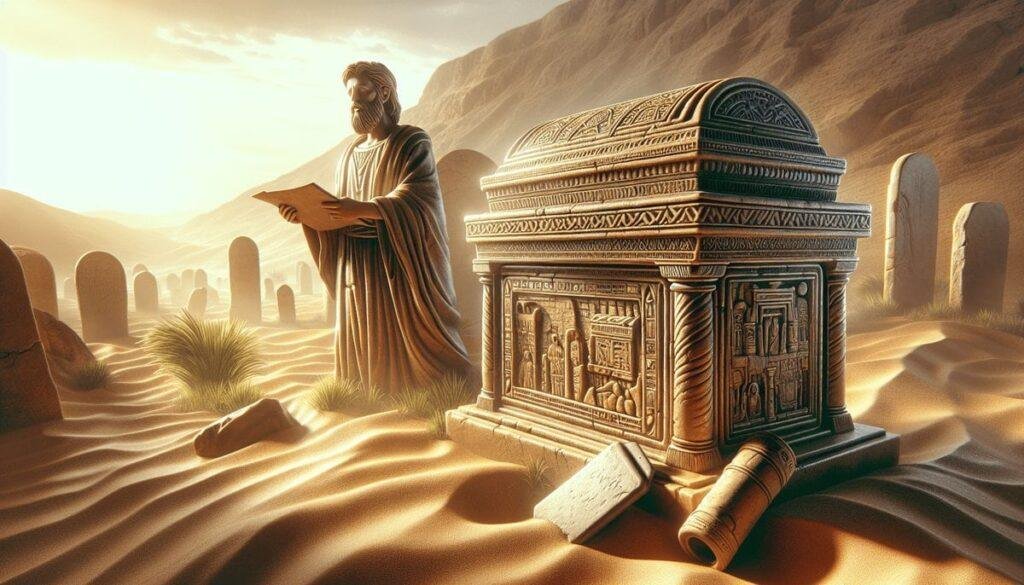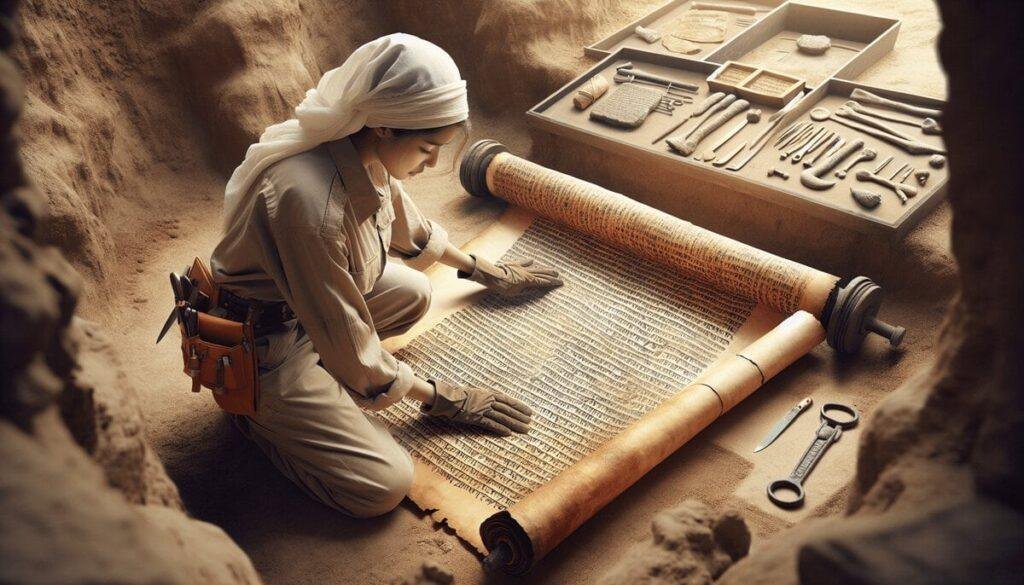Have you ever wondered what secrets lie hidden beneath the storied stones of the Temple Mount? This ancient site, one of the most significant in religious history, continues to intrigue and mystify scholars and archaeologists worldwide. Recent advances in archaeological scanning technology have begun to peel back the layers of time, revealing secrets kept locked beneath this sacred ground.
Archaeological scanning at the Temple Mount offers more than mere visual revelation; it provides a unique glimpse into the interplay of history, religion, and culture over millennia. This article delves into the science behind these discoveries, the compelling evidence unearthed by modern experts, and the profound implications for both historical scholarship and contemporary debates.
The Discovery Context: Unearthing Layers of Faith
Biblical References and Historical Background
The Temple Mount commands immense historical and religious importance. Revered in Judeo-Christian and Islamic traditions, it is the legendary site of Solomon’s Temple as referenced in the Hebrew Bible and the First and Second Temples of Jerusalem. According to the scriptures, it is here that major religious events unfolded, shaping the tapestry of spiritual history and identity.
Located in the historically rich city of Jerusalem, the Temple Mount has been at the heart of countless political and religious conflicts throughout history. While much of this ancient site has remained inaccessible to archaeologists due to its sacred status, modern scanning technology allows for exploration without physical disturbance, offering new opportunities to investigate its historical landscape.
Geographic Location and Recent Findings
Perched on the southeast corner of the Old City of Jerusalem, the Temple Mount covers approximately 37 acres. Its elevated presence is not just topographically significant but also symbolizes the heights of religious devotion and human ambition. Recent scanning efforts have illuminated its subterranean features, discovering voids and linear stone formations that suggest additional subterranean structures.
These findings, facilitated by non-invasive techniques such as ground-penetrating radar, have sparked scholarly debates and public fascination. While these technologies cannot entirely replace traditional exploratory methods, they provide invaluable insights without the risk of disturbing this revered ground.
Archaeological Evidence: Artifacts of the Ages
Specific Artifacts and Their Unveiling
Reports of newly discovered artifacts include architectural remnants believed to be related to previous temple constructions. Scanning technologies have identified materials and designs consistent with the biblical period. However, the interpretation of these results is complex and managed cautiously, keeping in mind the site’s layered history spanning multiple cultures and periods.
Dating Methods and Physical Descriptions
The primary method used in these investigations is ground-penetrating radar (GPR), complemented by remote sensing and magnetic surveys. These non-destructive techniques have enabled archaeologists to measure variations in underground materials, offering a timeline that aligns with known historical epochs.
In essence, GPR works by sending a signal into the ground and recording the reflected signals from subsurface structures. The time it takes for these echoes to return can help experts estimate the depth and composition of hidden features. Despite the apparent straightforwardness of such methods, the interpretation requires a nuanced understanding of geology and historical context.
Expert Interpretations and Insights
Experts across disciplines have weighed in on the implications of these findings. Dr. Rebecca Goldstein, an authority on ancient Near Eastern history, notes that these revelations offer a more nuanced comprehension of temple construction and destruction cycles. Notably, the discovery of artifacts hinting at Roman-era modifications aligns with historical records of Hadrian’s attempt to erase Jewish memory by building a Roman city on Jerusalem’s ruins.
Such interpretations underscore the Temple Mount’s role as a cultural palimpsest, recording layered histories as each era inscribed its narrative into the stones.
Significance: The Broader Implications
Biblical Implications and Historical Impact
The revelations from the Temple Mount are more than academic; they have profound biblical implications. As modern technology corroborates certain scriptural accounts, believers and scholars alike grapple with questions about the intersection between faith and historical fact. These discoveries may lend credence to some religious narratives, affirming physical places and events that shape spiritual identities.
Modern Understanding and Research Status
In the modern context, these discoveries bolster Jerusalem’s role as an essential backdrop in global religious discourse. The new revelations provide a foundation for continued interdisciplinary research, enabling historians, archaeologists, and theologians to collaborate and reinterpret ancient narratives.
Current Research and Future Directions
Current research is centered on refining scanning techniques to enhance resolution and data accuracy, allowing scholars to delve deeper into sub-surface structures without excavation. This balance between safeguarding heritage and advancing research is critical for the future of archaeological inquiries at sacred sites globally.
Conclusion
Archaeological scanning at the Temple Mount continues to unveil hidden facets of human history, bridging the ancient and the modern. Through innovative technology and careful research, scholars are rewriting chapters of Jerusalem’s story, offering insights that resonate far beyond academic circles. As these efforts progress, the potential for new discoveries grows exponentially, inviting you to engage with and understand the broader historical landscape.
As the sands of time are peeled back, what future revelations might shape our understanding of this sacred space? The journey into the heart of ancient mysteries remains open, inviting scholarly inquiry and public curiosity in its embrace. If interested, subsequent articles will delve deeper into individual discoveries, revealing how they fit into the vast tapestry of human history. As you contemplate these emerging legacies, consider the profound historical depths yet to be explored—an invitation to appreciate our enduring connections to the past.





